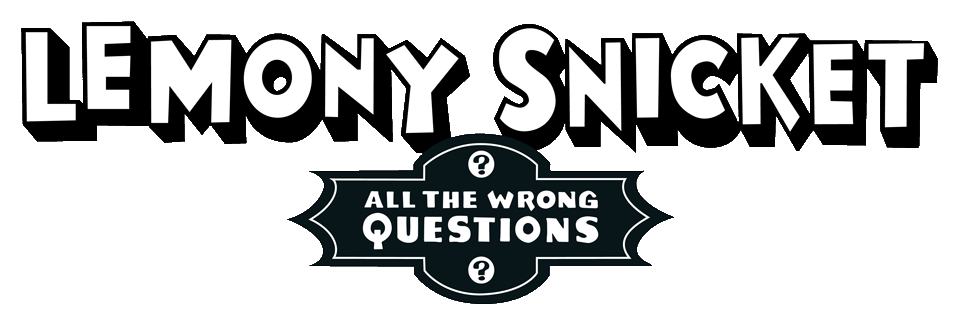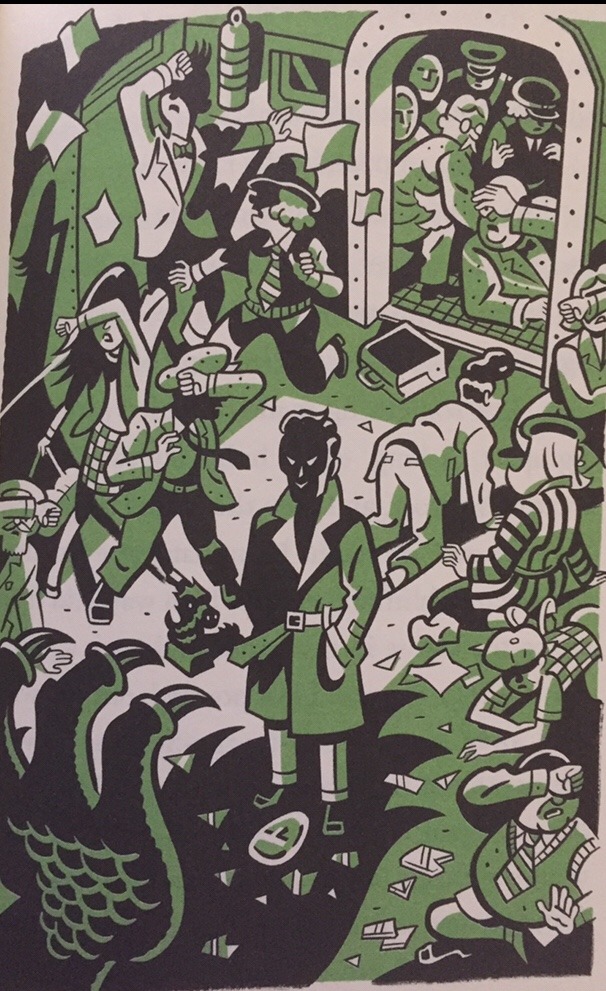SUPERVERSIVE Review: All the Wrong Questions, by Lemony Snicket
Tuesday , 17, April 2018 Superversive 1 Comment This has been updated from an article on Superversive SF.
This has been updated from an article on Superversive SF.
Like Snicket’s other big series, this series is not superversive. Since I’ve done so much writing on the Snicketverse anyway, and since the excellent second season of the Netflix series came out, I figure I might as well do a bit on his prequel series to “A Series of Unfortunate Events”, “All the Wrong Questions”.
My thoughts:
This series was both better and worse than “A Series of Unfortunate Events”.
“A Series of Unfortunate Events” was more creative in the sense that there really isn’t anything like it out there on the shelves. Snicket experimented and took risks with narration, literary techniques, absurdist humor, and general style that made the whole series feel, even when re-read today, like something fresh, new, and exciting. The only comparison I’ve ever been able to find is Douglas Adams. While “All the Wrong Questions” certainly feels as if it’s written by Lemony Snicket, with its literary references, love of wordplay, and entertaining narrator, it sticks much more closely to an established style (in its case, the series is very much a hard-boiled noir mystery, complete with world-weary narrator and femme fatale). There’s a built in structure in the series inherent to the genre that “A Series of Unfortunate Events” noticeably lacked; the books were formulaic, true, but the formula was their own.
Not that that structure didn’t have benefits. “All the Wrong Questions” is FAR, far better plotted. The plotting of “A Series of Unfortunate Events” was rather unwieldy and haphazard, but “All the Wrong Questions’” plotting is iron tight. Since the books – and the series as a whole – are structured as mysteries, this is very important.
All the Wrong Questions is the story of Lemony Snicket’s apprenticeship (Apprentice…for what? It’s unclear, as Lemony specifically says he isn’t actually a detective) under S. Theodora Markson. They end up in the town of Stain’d by the Sea, formerly a shore town but no longer by Lemony’s entrance: The sea has been drained to give the ink-making company of Ink, Inc. (okay, ha ha) easier access to the octopi where it gets its supply. While there Markson and Lemony are tasked to find a statue of a mysterious creature known as the Bombinating Beast, and this evolves into a plot to take down the murderous and mysterious villain known only as Hangfire.

The artwork in the series is AMAZING
The main character is more complex than any one character in “A Series of Unfortunate Events”. In the original series Snicket tended to define his characters with one memorable trait. Violet invents. Klaus reads. Sunny bites, and later cooks. Josephine is afraid. Jerome hates to argue. Hector is skittish. Olaf is a clever, drunken brute. As the series went on some shading was added to the characters, but not a whole lot; ask casual fans who Violet is and they’ll invariably say “She was the girl who invented things, right?”.
Snicket – this time our narrator AND protagonist – is clever, resourceful, witty, and brave, but he is also arrogant, rude, shockingly good at lying even to people he likes, and Machiavellian to a frightening, even downright terrifying, degree. Not any one character – or at least any one major character – in “A Series of Unfortunate Events” is as interesting as Lemony Snicket is in “All the Wrong Questions”.
The series also does a much better job handling the theme of moral ambiguity. ASoUE ended on an anticlimax; the majority of the questions Snicket sets up aren’t answered and the moral standing of several characters is muddied for no apparent reason except that it helps the author get his message across; it certainly doesn’t improve the story. Questions about characters are raised, but the book ends without coming to any conclusions. He perhaps gets his point across well, but because of the nature of that point it’s just about impossible for the ending not to fall flat.
ATWQ’s ending is anything but an anticlimax; in fact, “Why is this Night Different from All Other Nights?” is about as perfect a conclusion as Snicket could have possibly written. This time the theme of moral ambiguity actually makes the book stronger. The main mystery driving the series is answered but your entire perspective about everything you’ve read has totally shifted – for, you see, you’ve been asking the Wrong Questions.
The dialogue of “All the Wrong Questions” crackles. Take look at this speech by the villain, Hangfire:
“You fold together a flimsy decoy,” Hangfire said scornfully, “and try to play me like a clarinet, but you’ll collapse when you stand against me. All of you Stain’d citizens are the same. Your mother, Mallahan, was a journalist searching for the truth, but she didn’t have the courage to face what she found. Your parents, Hix, are too scared to come back to town, even to fetch their son. The Knight family drained the sea, and then went down the drain themselves. I could go on and on. The Losts. The Bellerophons. Doctors and actors, nurses and naturalists. Everyone was utterly worthless, and then along came a little girl who could perform all the trickery I needed.”
Look at that! How great is that? Magnificent.
By the way, one thing worth mentioning: Like “A Series of Unfortunate Events” before it the artwork of this series is absolutely fantastic, adding almost as much to the mood of the series as the text. I mean really:

The styling. The detail. The use of light and shadow. It’s fantastic!
So, to all who are thinking about trying out the series, I end my article with this:
Your question throughout the series is almost certainly going to be “Why does Hangfire want the statue of the Bombinating Beast so badly?”
But that’s the wrong question. The right question is this: What lengths would Lemony Snicket go to in order to end Hangfire’s villainy?
The series is not superversive, but especially for fans of “A Series of Unfortunate Events” it’s highly recommended.
Hello, just wаnted to mention, I enjoyed this aгticle.
It was helpful. Keep on posting!